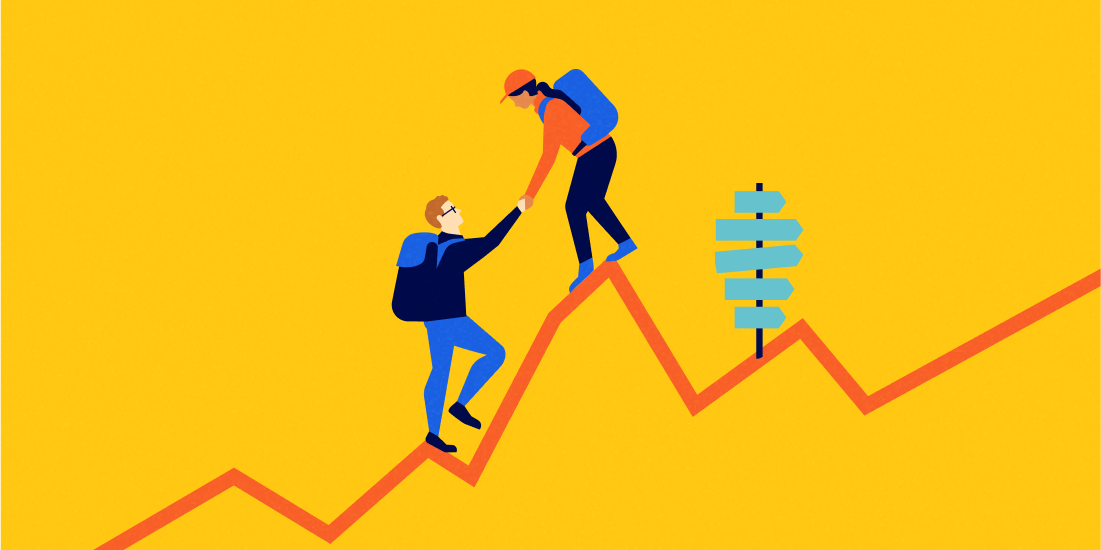5 financial tips: What to do when rates fall
Interest rates are falling but that doesn’t mean the sky is falling when it comes to your finances. Here are 5 tips to help you weather a falling-rate environment.

5 financial tips to consider when the Fed cuts rates
Depending on your financial situation, as interest rates fall, consider how you can apply these five tips to help keep your financial goals on track.
Tip 1: Keep enough money in cash for short-term goals
In a falling-rate environment, having a cash cushion can provide peace of mind and flexibility for unexpected expenses or opportunities. Make sure to allocate some funds for short-term goals, like upcoming bills or home improvements.
- Make sure you have an emergency fund: An emergency fund acts as a safety net during turbulent times. Aim to save 3–6 months' worth of living expenses in a high-yield savings account or money market fund.
- Keep enough cash for purchases you are planning to make in the next 12 months: Whether it's a new car, home renovation, or vacation, having cash on hand can help you take advantage of sales and discounts without worrying about interest rates.
Tip 2: Consider moving excess cash to investments
With interest rates falling, yield on cash accounts generally falls too, so consider investing your extra cash into assets with potentially higher returns. This could include stocks or bonds.
- Why bonds? When rates drop, bond prices tend to rise. They are also generally less risky than stocks, making them a solid addition to a diversified portfolio.
- Why stocks? Rate cuts can stimulate economic growth, potentially boosting stock prices. While investing in individual stocks carries risk, diversifying your portfolio across sectors and industries can help mitigate potential losses during market volatility. And if you have a long-term time horizon, staying invested can pay off over the years. While investing involves more risk than keeping your money in cash, stocks have had greater long-term gains historically than leaving your cash in savings.
Bonus tip: Two ways to invest when rates fall.
- Lump sum investment: This simply means that you take all, or a large portion, of your cash and invest it in one sum. It’s easy, and it gets your cash invested in the market quickly.
- Dollar-cost averaging: You can automate your investments at Betterment using recurring transfers and deposits for dollar-cost averaging. It’s a great method to invest a little bit of each paycheck.
Start investing at Betterment today.
Tip 3: Diversify your investments
Falling interest rates can have unforeseen effects on various asset classes. To hedge against these fluctuations, make sure to maintain a diversified investment strategy that includes a mix of stocks, bonds, and other assets. By investing in many types of assets, if one falls in value, your overall portfolio is less impacted. Diversification is your friend because we can’t predict the future.
Tip 4: Understand how falling rates impact the housing market
As interest rates decrease, mortgage rates for buyers may become more favorable. However, this could lead to increased demand and potentially higher home prices. If you're planning to buy or sell a property, be prepared for these shifts in the market, and work with a trusted real estate professional to understand what’s happening in your local housing market. Depending on housing prices and interest rates, you may want to weigh the benefits of buying, renting, or — if you already own a home — refinancing.
Tip 5: Refinance high-interest debt
Take advantage of lower rates by refinancing high-interest debt. This can include mortgages, auto loans, personal loans, and even credit card debt. For example, if you purchased your home when mortgage rates were at recent highs, refinancing to a lower rate could save you thousands of dollars in interest payments over the course of your loan. Another strategy to consider if you have multiple sources of debt is a loan consolidation. You may be able to secure better terms by consolidating your debts into one loan for easier management.
What should you do with your money when rates fall?
As we said in our five tips, we recommend considering moving excess cash to stocks and bonds to diversify your overall investing strategy.
But what does that look like? It’s a balance of risk and reward to support your goals.
Ask yourself:
What are my financial goals? Are they short- or long-term? And how much risk am I willing to take?
If you are willing to take on a bit more risk and have longer-term goals, then moving more money into stocks and bonds may be a wise approach to grow your money over time. Just make sure you have enough cash on hand for emergencies and short-term goals.
At Betterment, we have accounts to support your goals.
From growing your savings to building long-term wealth, you can be invested with your preferred balance of risk and return. Consider
- Cash Reserve: With our high-yield cash account, earn interest on your savings with no market risk and access your money whenever you need it.
- Goldman Sachs Tax-Smart Bonds: A 100% bond portfolio that gives higher-income individuals a personalized option to target additional after-tax yield.
- BlackRock Target Income: With this 100% bond portfolio, aim for higher yields while limiting stock market volatility with one of four levels of risk to choose from.
- Investing portfolios: Build wealth over time with one of our diversified portfolios of stocks and bonds.
Ready to be invested?

